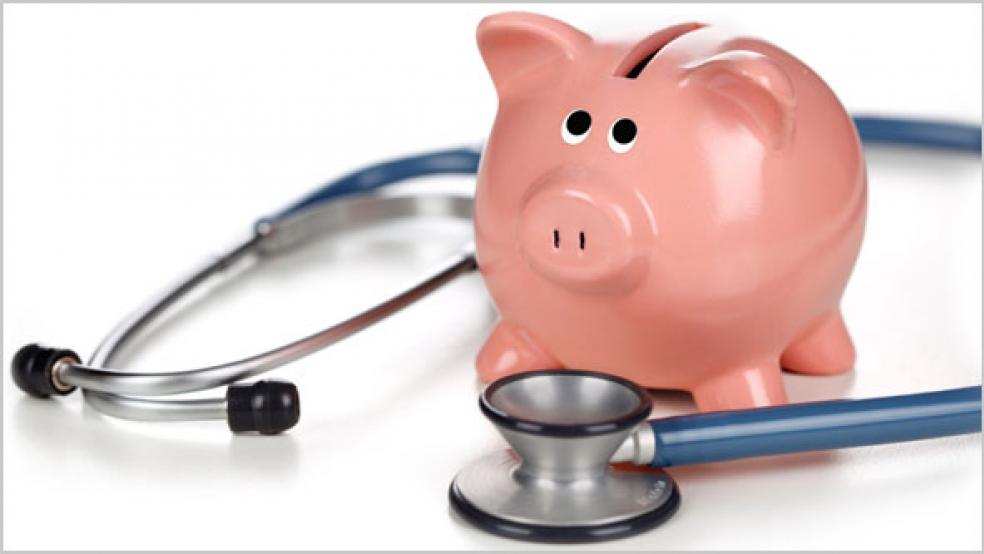Economists will debate the causes of the great slowdown in health-care spending that’s now underway for a long time to come.
For most of the past three decades, national spending on health grew twice as fast as the rest of the economy, sometimes at rates approaching double digits. Its share of the gross domestic product grew inexorably larger, soaring over 17 percent in 2008, a near doubling since 1980.
But then the Great Recession hit. It was as if the health-care sector’s voracious appetite for private and taxpayer dollars had received a gastric bypass.
In 2009, health-care spending growth slowed to a 3.8 percent crawl, the lowest level on record. In 2010, it inched up 3.9 percent, which meant, after adjusting for inflation, that health’s share of the national economy remained the same.
And last year, preliminary government estimates released Tuesday showed, health care spending once again grew at just a 3.9 percent rate. If the economists at the Centers for Medicare and Medicaid Services (CMS) are correct, it will stay around that level for another two years and cause national health care expenditures to fall to 17.8 percent of GDP in 2013, the year before the reforms of the Affordable Care Act are due to kick in.
BENDING THE CURVE?If this recession-induced self-rationing is having a major impact on health, it hasn’t shown up in the statistics, at least not yet. The age-adjusted death rate in the U.S. fell to its lowest level ever in 2010, according to the latest vital statistics report from the Centers for Disease Control and Prevention. So has the overall infant mortality rate, the African-American infant mortality rate (which is two-and-a-half times higher than for whites) and the death rates for every age group except those over 85. The age-adjusted death rates for half the leading causes of mortality are also on the decline, including heart disease and cancer, which account for nearly half of all deaths in the U.S.
And that’s before a single person gets coverage under the Affordable Care Act, whose fate will be decided by the Supreme Court, perhaps as early as next Monday. The most likely outcome is that the high court will strike down the individual mandate, but leave intact the rest of the law and its promise to provide access to insurance coverage for 60 percent of the 50 million people without it.
Expanding insurance coverage should improve health. But it will also lead to higher health-care spending by people, many of them poorer and sicker than the general population, who previously relied on emergency room care and never availed themselves of the better routine and preventive services that come with insurance coverage. CMS is projecting that increased purchases by the newly insured will bump up health-care spending by 7.4 percent in 2014, the first year the Affordable Care Act is in effect. But then it almost immediately falls back to an average rate of 5.7 percent for the decade, which is only 1.3 percent or $478 billion higher in cumulative spending than there would have been if there had been no health-care reform law.
The U.S. spent $2.7 trillion last year on health care. CMS projects it will grow to $4.8 trillion or 19.6 percent of GDP in 2021. But even with that higher spending, CMS said, overall health-care spending will still grow over the next decade at a rate that is only 0.9 percentage points higher than GDP.
The actuaries said that changes to the Medicare payment and delivery system under the 2009 reform, combined with the tax on high-cost plans that starts in 2018, will succeed in reducing overall health-care expenditures by 0.1 percentage point between 2015 and 2021. Under the reform law, the “death panel” cuts from the Independent Payments Advisory Board would only move forward if health care grows at a rate greater than GDP plus 1 percent.
WHO WILL PAY?
On the “who pays” side, the CMS report clearly outlined how this new spending will benefit middle-class and low-income families. Individuals’ out-of-pocket spending by 2021 will account for only 9 percent of all health-care expenditures, down from 11 percent in 2011. Taxpayers, on the other hand, will face higher burdens. Medicaid, which will pay for half the coverage expansion, is slated to rise to 20 percent of all expenditures, up from 16 percent in 2011. All of the increase will be sent to the states by the federal government under the reform law.
Private health insurance, meanwhile, will fall a percentage point to 31 percent of all health-care expenses in 2021. The Congressional Budget Office has projected that some employers will find it more advantageous to send their individual low-wage workers to the new state-based exchanges to buy subsidized coverage rather than purchase the higher-quality group plans required by the law.
There are a number of caveats to the report, of course. Like all CMS projections, it is based on current law and assumes that cuts to physician pay will go into effect. If Congress, as it always has, overrides the 30.9 percent pay cut scheduled for next January, Medicare spending will rise 5.0 percent instead of 1.3 percent next year, and national health-care expenditures will rise 4.6 percent instead of 3.8 percent.
The projection also assumes implementation of the 2 percent cut to all providers contained in the Budget Control Act through sequestration, which Congress will reconsider later this year or early next year. CMS did not estimate what impact eliminating those projected cuts will have on Medicare or national health-care expenditures.





